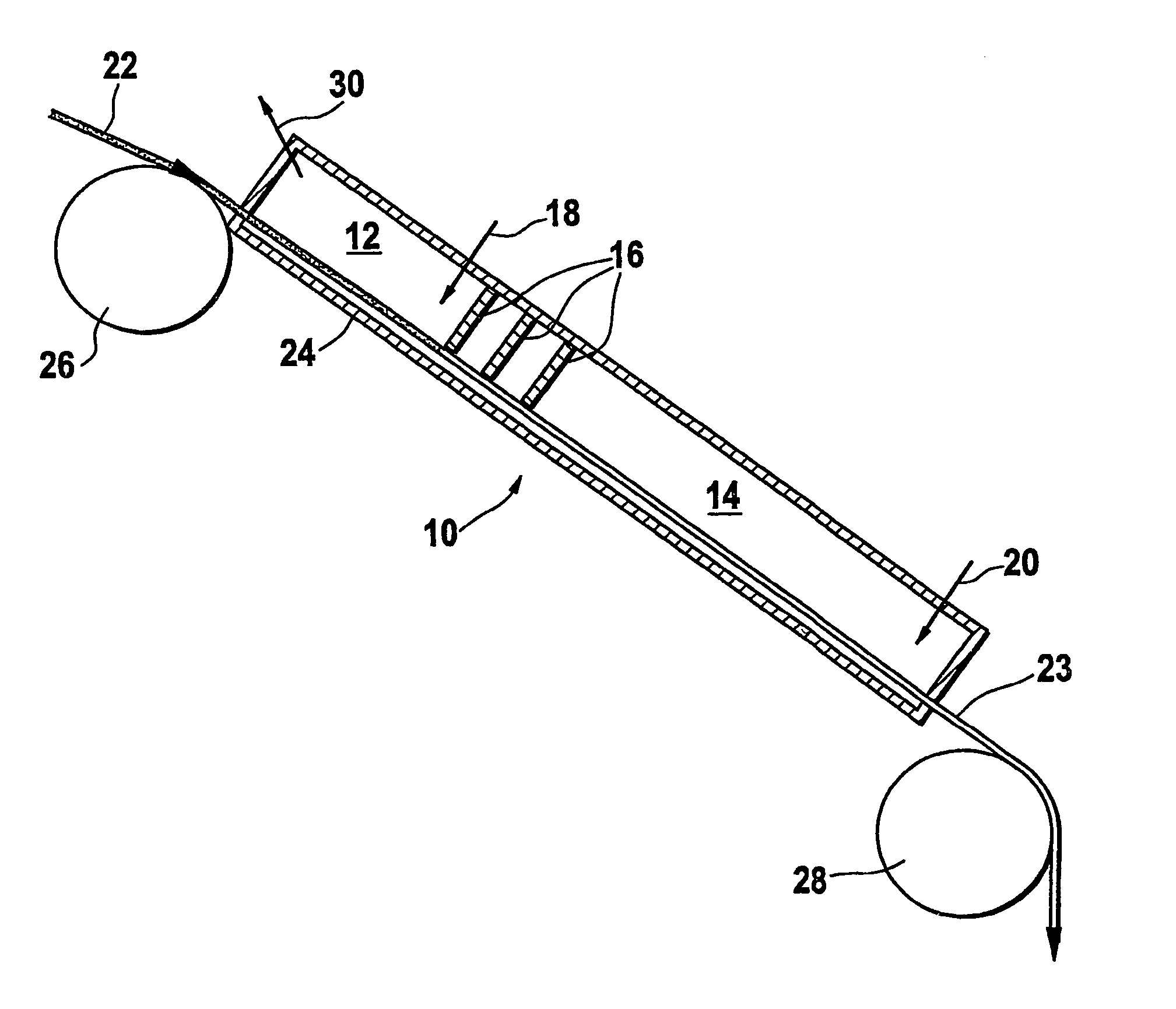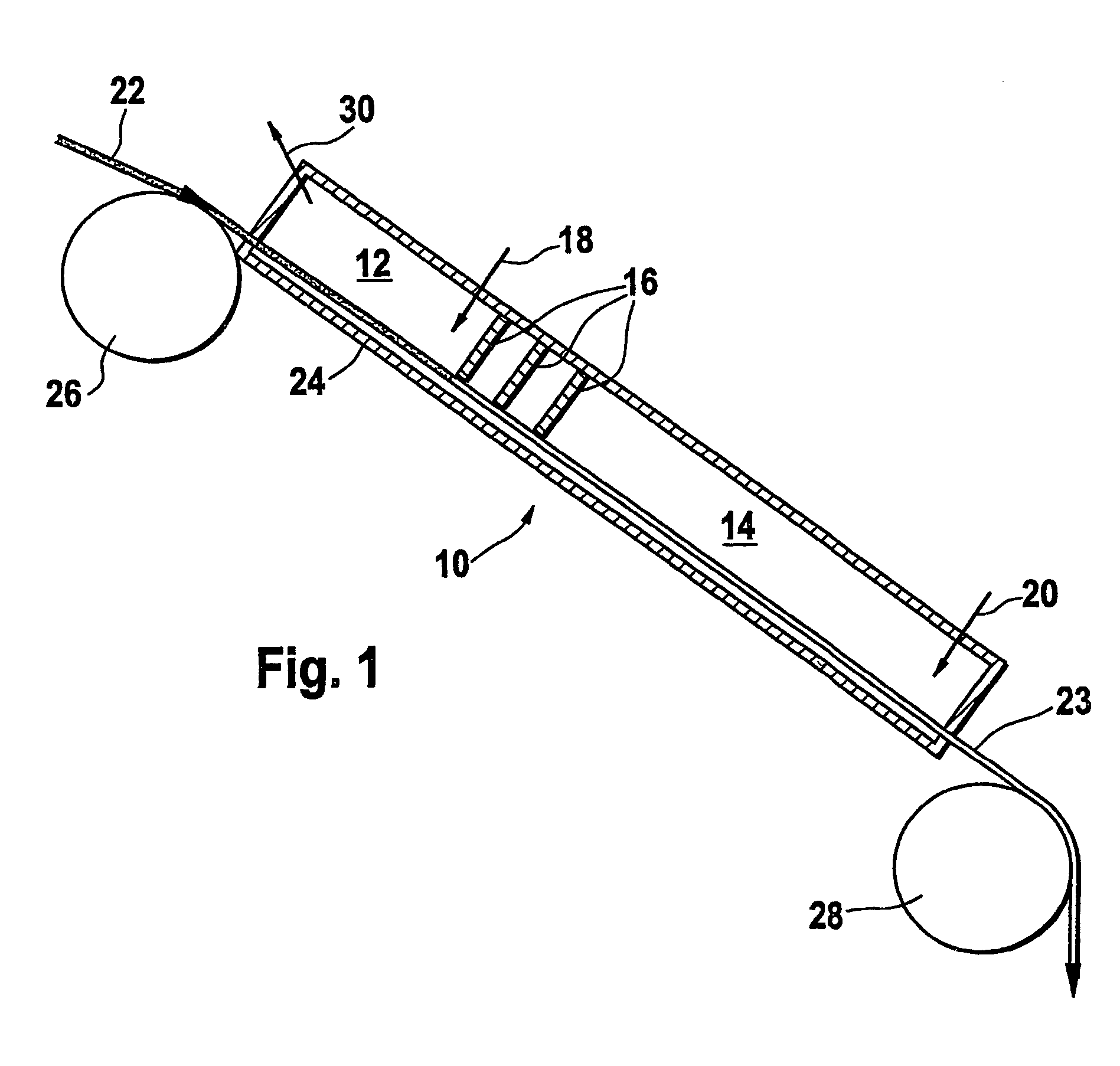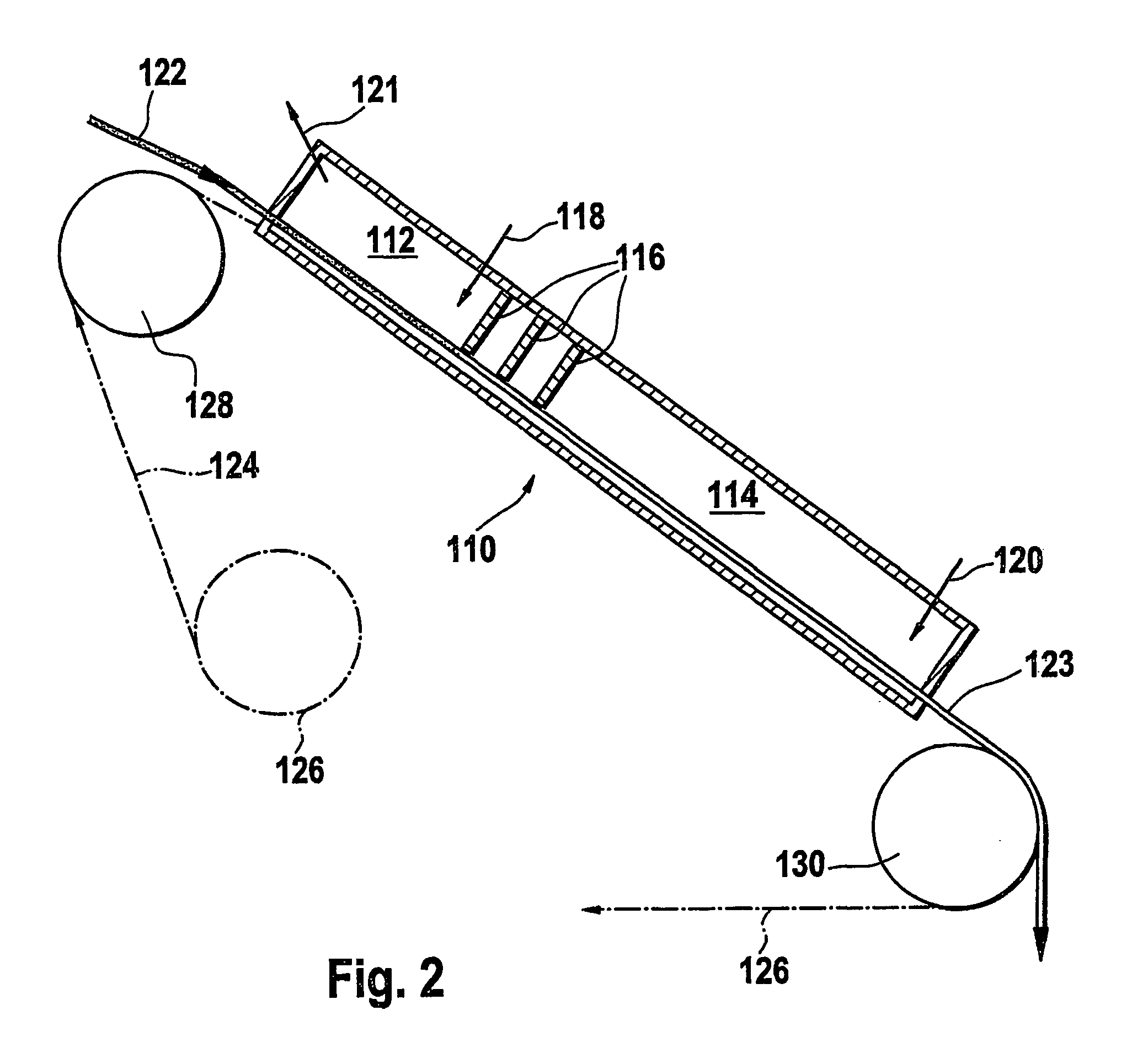Method for producing metal foams and furnace for producing same
a technology of metal foam and furnace, which is applied in the direction of furnace components, furnace types, lighting and heating apparatus, etc., can solve the problems of oxidation of metallic nickel, complicated treatment, and important issue in the production of metal foam for the manufacture of batteries, and achieves the effect of reducing the structure of the furnace and facilitating the evacuation of reaction products
- Summary
- Abstract
- Description
- Claims
- Application Information
AI Technical Summary
Benefits of technology
Problems solved by technology
Method used
Image
Examples
Embodiment Construction
[0039] The present method relies on the heating of a metal-coated polymer structure by exposing it to a high temperature in a controlled water vapor atmosphere so as to remove the polymer substrate and produce a ductile metal foam structure.
[0040] The metal-coated polymer structure from which the metal foam is produced is generally obtained by electroplating a metal on a conductive polymer foam. A variety of metals, such as e.g. nickel, copper, iron, chromium, zinc, aluminum, lead, tin, gold, platinum or other metals belonging to the platinum group and their alloys, can be electroplated on such polymer foams as films, superposition of films or as blend of phases or structures in order to treat them according to the present method to obtain the corresponding metal foam. However, the present method is particularly adapted for the production of ductile copper, respectively nickel, foam structures from copper-coated, respectively nickel-coated, polymer structures.
[0041] The polymer subs...
PUM
| Property | Measurement | Unit |
|---|---|---|
| temperature | aaaaa | aaaaa |
| temperature | aaaaa | aaaaa |
| temperature | aaaaa | aaaaa |
Abstract
Description
Claims
Application Information
 Login to View More
Login to View More - R&D
- Intellectual Property
- Life Sciences
- Materials
- Tech Scout
- Unparalleled Data Quality
- Higher Quality Content
- 60% Fewer Hallucinations
Browse by: Latest US Patents, China's latest patents, Technical Efficacy Thesaurus, Application Domain, Technology Topic, Popular Technical Reports.
© 2025 PatSnap. All rights reserved.Legal|Privacy policy|Modern Slavery Act Transparency Statement|Sitemap|About US| Contact US: help@patsnap.com



